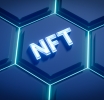Unveiling the Mystery of “Black Box” Trading in Forex

Unveiling the Mystery of “Black Box” Trading in Forex
The world of forex trading is as vast as it is complex. One of the most intriguing and misunderstood facets within this domain is “black box” trading. Defined as the use of automated trading systems driven by algorithms, black box trading has become a significant force in modern forex markets. These systems execute trades based on pre-programmed criteria with minimal human intervention, leading to increased market activity and liquidity.
Historically, black box trading emerged from the need for faster and more efficient trading methods. Early forms of algorithmic trading date back to the 1970s with the advent of electronic exchanges. However, it wasn’t until the computational power surge and advancements in AI during the late 20th and early 21st centuries that black box trading systems truly came into their own.
Historically, black box trading emerged from the need for faster and more efficient trading methods. Early forms of algorithmic trading date back to the 1970s with the advent of electronic exchanges. However, it wasn’t until the computational power surge and advancements in AI during the late 20th and early 21st centuries that black box trading systems truly came into their own.

Unveiling the Mystery of “Black Box” Trading in Forex
Mechanics of Black Box Trading Systems
At its core, black box trading leverages sophisticated algorithms and artificial intelligence to analyze market data and execute trades. These systems process vast amounts of information at lightning speed, identifying patterns and opportunities that would be impossible for a human trader to discern in real-time.The key components of black box trading include:
Algorithms: The heart of any black box system, algorithms are sets of rules that determine when to buy or sell currencies based on various indicators such as price movements, volume, and historical data.Artificial Intelligence: AI enhances these algorithms by learning from past trades and continuously improving decision-making processes. Machine learning techniques allow these systems to adapt to changing market conditions dynamically.
High-Frequency Trading (HFT) Technology: To capitalize on minute price discrepancies, many black box systems utilize HFT technology, enabling them to execute thousands of trades per second.
Data Feeds: Real-time data feeds from exchanges provide the necessary information for these systems to make informed decisions instantaneously.
Advantages of Black Box Trading
The allure of black box trading lies in its numerous advantages:Speed and Efficiency: Human traders simply cannot compete with the speed at which these systems operate. By executing trades within milliseconds, black box systems can take advantage of fleeting opportunities that would otherwise be missed.
Profitability: The precision and rapid execution capabilities often translate into higher profitability for traders using these systems.
Reduction of Human Error: Automated trading eliminates human errors stemming from miscalculations or mistyped orders.
Emotional Neutrality: Unlike human traders who may be swayed by fear or greed, black box systems adhere strictly to their programmed rules, ensuring consistent execution regardless of market sentiment.
Challenges and Risks Associated with Black Box Trading
Despite its advantages, black box trading is not without its challenges:Lack of Transparency: One major drawback is the opacity surrounding how these systems operate. Often proprietary in nature, their inner workings are known only to their creators, making it difficult for regulators or even users to fully understand their decision-making processes.
Market Manipulation Risks: The ability to execute large volumes of trades rapidly raises concerns about potential market manipulation. Flash crashes—sudden market drops triggered by automated selling—are stark reminders of this risk.
Ethical Concerns: The use of AI in financial markets also raises ethical questions about fairness and equality among traders who may not have access to such advanced technologies.
Future Prospects and Regulatory Considerations
Looking ahead, technological advancements will likely continue shaping the future landscape of black box trading:Evolution in Technology: As AI becomes more sophisticated and computing power continues to grow exponentially, we can expect even more refined and powerful black box systems capable of navigating increasingly complex market environments.
Regulatory Oversight: Given the risks associated with this form of trading, regulatory bodies worldwide are stepping up efforts to ensure fair practices without stifling innovation. Measures such as transparency requirements for algorithmic strategies and limits on high-frequency trades are being considered or implemented.
In conclusion, while black box trading offers significant advantages in terms of speed, efficiency, and profitability, it also brings forth challenges related to transparency, market integrity, and ethical considerations that must be carefully managed through appropriate regulatory frameworks moving forward.
Forex trading, Algorithmic trading, Market transparency, Regulatory oversight, Automated systems









Report
My comments